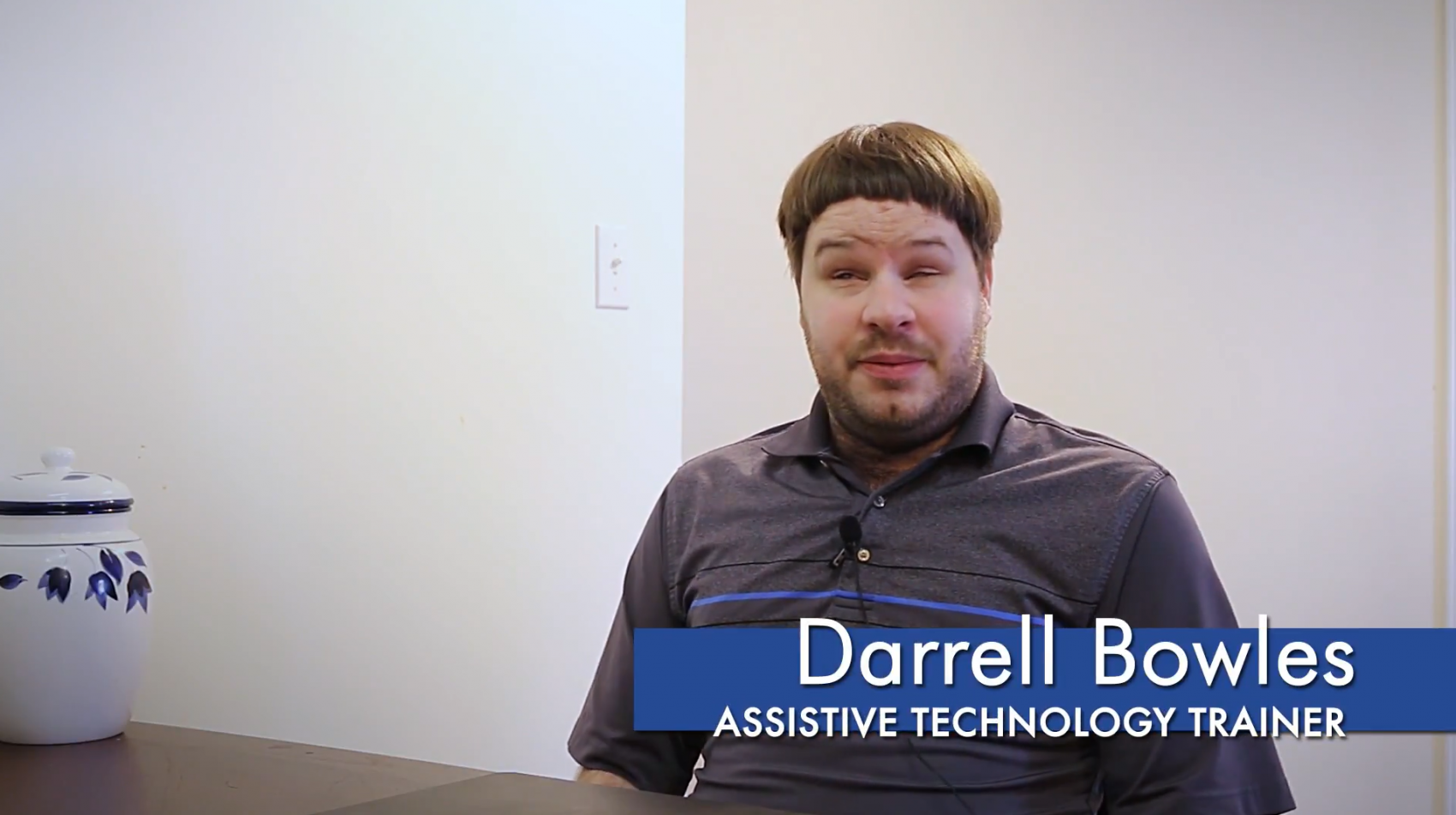At Marketplace Simulations, we recognize the importance of accessibility in educational materials, and strive to ensure a pleasant experience for all of our users, including the disabled community. We sat down with Mr. Darrell Bowles, Assistive Technology Trainer for the Office of Disability Services at Pellissippi State Community College, to discuss accessibility in higher education. Darrell is blind, and his job entails testing educational websites, e-books, and software for accessibility compliance. After trying out one of our business simulations, Darrell joined the team as he worked as a consultant with Marketplace Simulations, providing guidance on accessibility enhancements for the new student interface. Specifically, Darrell provided great insight on how these updates could impact the learning experience of a person who is visually impaired.
Q: With the diversity of learners in today’s classroom, what does accessible content and resources in higher education mean to you?
A: For me as a blind individual, accessible content means, first and foremost, does it work with a screen reader? But it also means, does it work for someone who is dyslexic, has partial vision, or can’t use their hands? It’s not one-dimensional anymore. When we talk about niche products from an educational perspective, we’re not in that era anymore of “this is for blind people” or “this is for sighted users who are learning disabled.” You may have a blind person who is also ADHD, or someone with partial sight who also has a traumatic brain injury. It isn’t just about working with one individual or group of individuals ― it’s about making the content work for everybody. We call that universal design.
Q: From your own perspective, explain the challenges and obstacles that a visually impaired student might face when they encounter an online resource where the content or interface is not optimized for accessibility. What extra steps do you have to take in order to be able to consume the content like everyone else?
A: There are several things that I look for in determining whether or not a website or interface is accessible. First, does the heading structure make sense? If you have a heading level one, that is your main idea, and levels two through four are subtopics of that main idea. A common problem I see on most websites, even if they are deemed accessible, is that people go crazy with headings because they know that they provide navigational structure and aid. That defeats the purpose of your whole structure, making it difficult to navigate the website with a screen reader. Another common issue I see are images that are not described. The simple solution to that is to use “alt tags” that allow you to write in a description of your image, which must contain adequate detail in order to be accessible.
Q: What do you foresee as the future for accessibility in higher education?
A: What I would like to see is an understanding between educational institutions, the companies that make the software, and the AT (assistive technology) companies. There is a huge divide between these three groups. What I would like to see in the future are these three groups coming together, bringing all of their tools and resources to the table, and implementing solutions that are not just accessible, but that even create a delight in learning. I think that when we get to that point, all of these lawsuits and counter lawsuits regarding accessibility will come to an end. For now, all we can do is continue to reach out, educate, and do what we need to do until that day happens.
Q: Again, taking into account the diversity of learners in today’s classroom, how could an online interactive resource like Marketplace Simulations aid in the learning process? How about specifically for someone who may be visually impaired?
A: To be perfectly honest, when I first visited the website, I didn’t know what to expect. I was very pleasantly surprised to find the care that was taken by Marketplace developers to provide not only excellent navigation, but also accessible graphs, and videos with descriptions that the screen reader was able to read. The videos also had captions, which would be incredible for a deaf person. If the care of making it screen reader friendly was that impressive, then for other users it would be just as easy to navigate and interact with, and that’s a huge first step.
Q: Now taking into consideration the efforts that Marketplace Simulations has made in order to make our simulations more accessible to all students, what are your thoughts?
A: We have certain criteria that says, if it’s not accessible to one, we don’t buy it. The work that I’ve seen with Marketplace would be enough for me to implement it personally for my students. Marketplace is a small company, and you’ve don’t what some large companies will not even attempt to do, and that is take the time and effort to make your website accessible. The interface is easy to navigate. While websites like eBay and Amazon might be accessible, sometimes they add things that make it very cumbersome. Marketplace has not done that. They are trying to make their user experience easier as opposed to more difficult.
Special thanks to Darrell for his professional guidance as Marketplace Simulations works to fulfill its commitment to provide a rewarding learning experience so that all students can easily, equally, and independently engage with our business simulations. To learn more about Marketplace Simulations’ commitment to accessibility compliance, click here.

